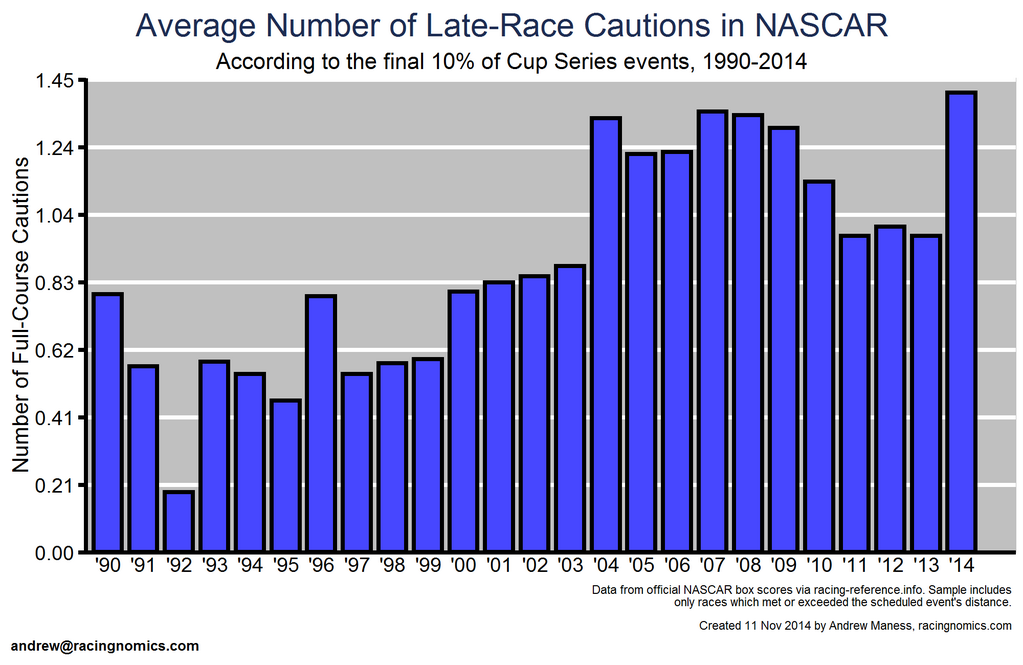T
teddybusch
Guest
http://nascar.nbcsports.com/2017/06...en-flag-tracking-trash-for-the-past-16-years/
Research by NBCSports.com of every Monster Energy NASCAR Cup Series race report since 1990 (the first season in which caution reasons were listed for every race on Racing-Reference.info) shows the 2001 season is when yellow flags for unsafe track conditions became standard practice in race officiating.
Since the 2001 Daytona 500, which marked the first race in a new era of national TV contracts and the most recent race in which a driver was killed in NASCAR’s premier series, NASCAR has averaged nearly 63 debris yellows per season, reaching a high of 85 in 2005.
Compare that to the 11-season stretch from 1990-2000, which produced an average of 15 debris cautions per season with a high of 20 in 1994 and a low of 11 in 1999.
The final yellow was thrown for debris in five of 13 season finales at Homestead-Miami Speedway (and two of the past three) since the advent of the playoffs.
Research by NBCSports.com of every Monster Energy NASCAR Cup Series race report since 1990 (the first season in which caution reasons were listed for every race on Racing-Reference.info) shows the 2001 season is when yellow flags for unsafe track conditions became standard practice in race officiating.
Since the 2001 Daytona 500, which marked the first race in a new era of national TV contracts and the most recent race in which a driver was killed in NASCAR’s premier series, NASCAR has averaged nearly 63 debris yellows per season, reaching a high of 85 in 2005.
Compare that to the 11-season stretch from 1990-2000, which produced an average of 15 debris cautions per season with a high of 20 in 1994 and a low of 11 in 1999.
The final yellow was thrown for debris in five of 13 season finales at Homestead-Miami Speedway (and two of the past three) since the advent of the playoffs.

